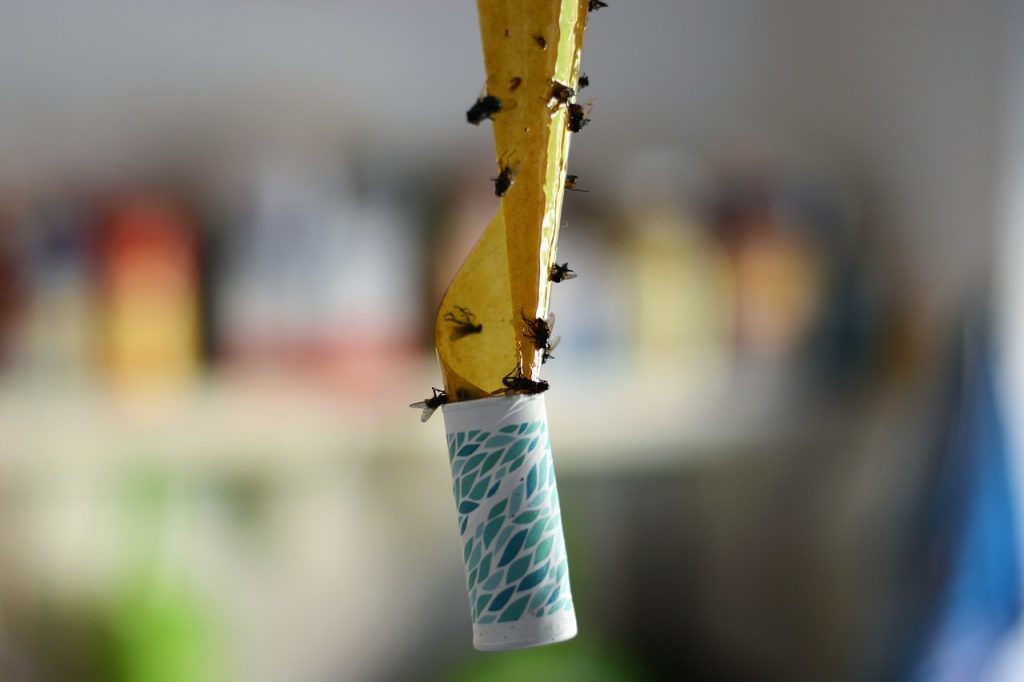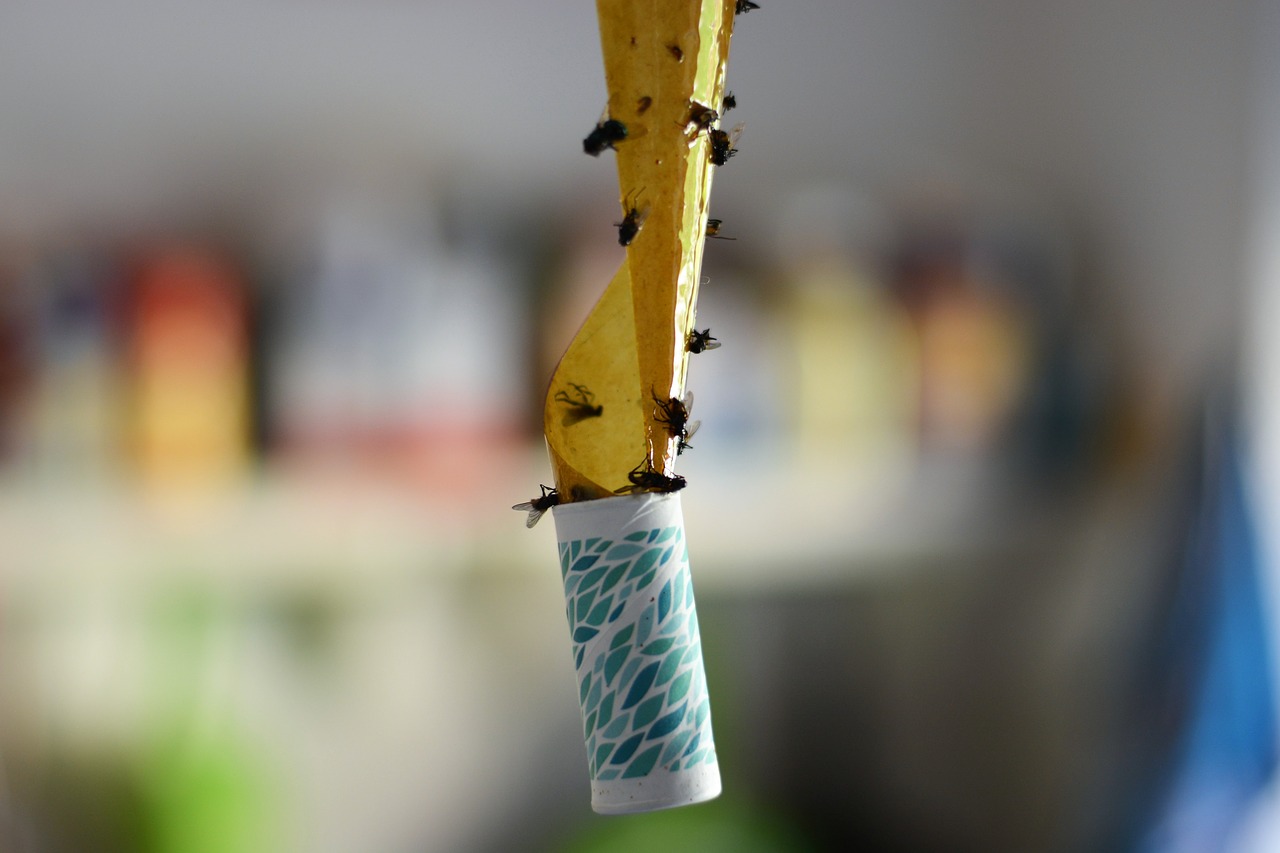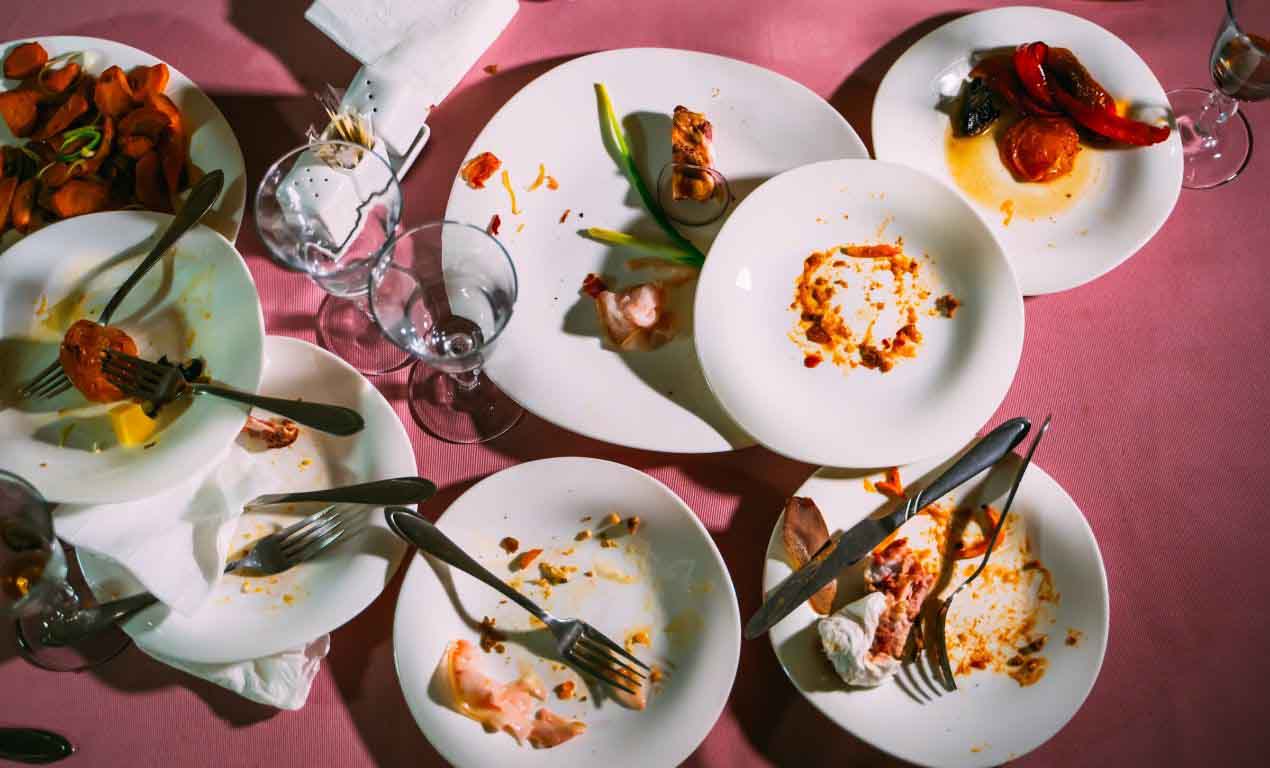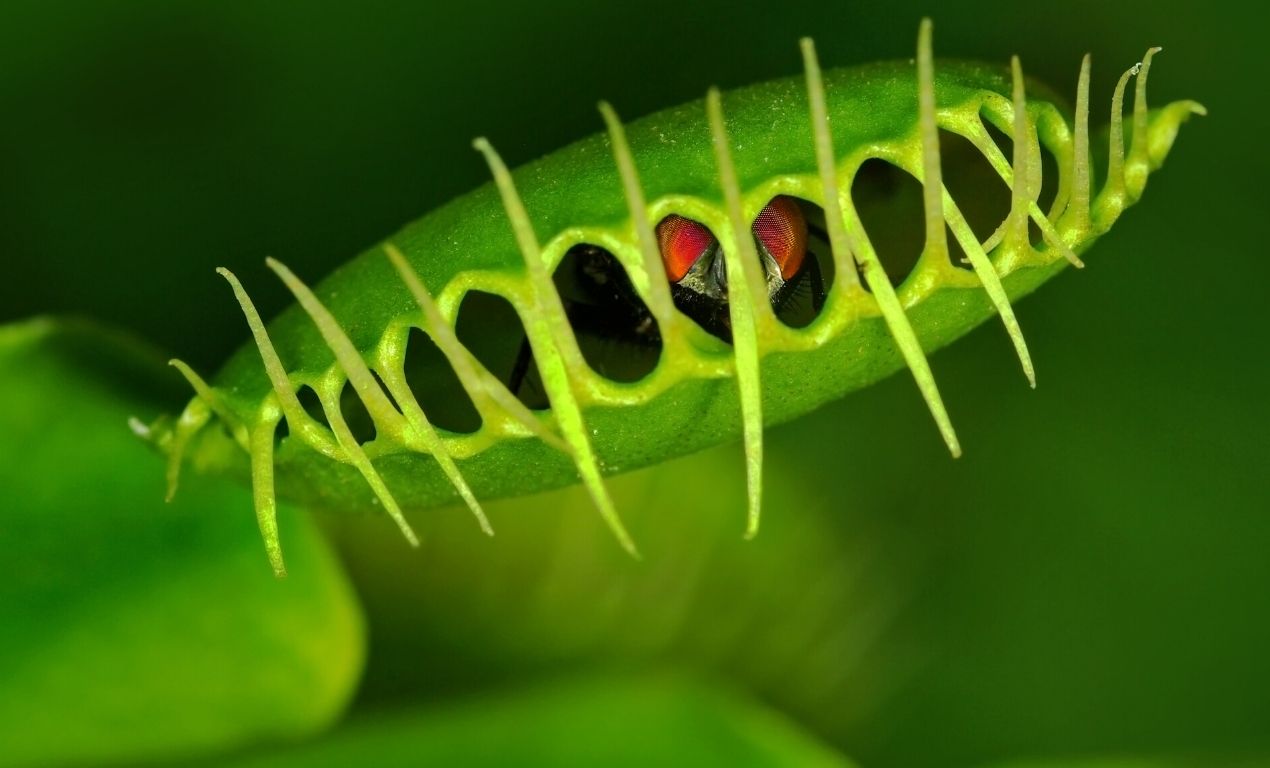
 There are over 1,000,000 species of flies like the horse flies, crane flies, hoverflies, etc. They get differentiated by their physical appearance, food habits, and what they eat. Some of these species are found in almost every house and are very difficult to remove. There are some fly traps that works really well in getting rid of them.
There are over 1,000,000 species of flies like the horse flies, crane flies, hoverflies, etc. They get differentiated by their physical appearance, food habits, and what they eat. Some of these species are found in almost every house and are very difficult to remove. There are some fly traps that works really well in getting rid of them.
So, what are top 10 best fly traps? Here is the list of top 10 fly traps:
- Rescue – nontoxic disposable fly traps
- Victor M380 – Reusable fly magnet trap
- EcoSMART insect killer
- Gardner – Web fly trap
- Aunt Fannie’s Fly Punch
- Hoont Electric Fly Zapper
- Indoor tape traps
- Black flag fly stick
- Trappify Sticky
- Redtop flycatchers
- Venus flytrap
Continue reading to know about these fly traps.
Little Bit About Flies
Flies typically have a mobile head, with large compound eyes. Some flies like the black flies and robber flies have mouthparts for piercing and sucking. While others’ mouthparts get used for lapping and sucking, their wings help them maneuver quite well during the flight, and the pads and claws on the underside of feet help them to cling to smooth surfaces.
Flies undergo complete change or metamorphosis, from their eggs to larva, pupa, and finally adult fly. Flies have a short life-cycle of about a month.
They contribute to the ecological balance by pollinating plants. Flies are known to spread diseases like dengue and the West Nile fever. They propagate foodborne illness among humans.
Flies are abundant and found across the world, except Antarctica. Their aerial movement gets help from their small and streamlined body. Their compound eyes and three small ocelli at the top help flies to see. Their optic flow field and set of neurons help them to navigate its course and reach its destination. They, like other insects, have chemoreceptors, which help them with smell and taste.
Houseflies
Houseflies are the most common among all flies and get found near and inside our living quarters.
Physical Appearance
They are usually grey. The length of the flies is between four to eight millimeters. Their upper part has four grey stripes, and their entire body is found with a hairy projection covering. Female fly is more significant than males, and their eyes are apart. Their mouthparts allow them to suck, and hence they don’t bite. Their wingspan is around 13-15mm, and their hind halteres help them to navigate, while in flight.
Behavior And Habitat
The indoor houseflies get found on your table, wall, ceiling, floor, chairs, light, fan, clothes, and almost everywhere. They get discovered near a food source, trash bin, dirty washroom, or basins.
The outdoor houseflies are found sitting on flower pots, on the plants and trees, flowers, garden benches, and tables, on lampshades, and any other perch. They are in plenty near animal excreta, trash bins, pump house, leaking pipes, garbage dump, or the fresh mound of the organic soil mixture.
Feeding Habits
Houseflies feed on various organic matter, including feces and liquids. When they sit on solid food, they vomit on it, liquefies the same, and then sucks the solution. This is how they infect the food matter by carrying bacteria on their body, foot, and mouthparts and depositing on food substances they sit and feed on.
Houseflies feed on everything, from fruits, vegetables to animal and human fecal matters. They get generally attracted towards:
- Overripe fruits and vegetables
- Animal and human feces
- Any sugary things
Life-Cycle
Houseflies can lay up to 2,000 eggs in its lifetime. They are laid in a batch of 75 to 100 at a time. Flies choose damp and moist places with lots of food for the larvae to feed on. Garbage dump and rotting food are apt places for the eggs to get laid.
The eggs hatch in a day, and the larvae, also called grubs, are 4-8mm long and pale-colored. For the next five to fourteen days, they feed on the food, crawl to a cool, dry place and enter the pupa stage. During this stage, they form a reddish-brown hard covering to protect itself. The pupa converts into an adult after 3-4 weeks. The adult fly has a lifespan of around one month.
What Attracts Flies?
 Let us understand the reason for flies to be attracted to a place or an environment.
Let us understand the reason for flies to be attracted to a place or an environment.
Leftover food: Any leftover food on the dining table, kitchen counter, or the garden is a sure shot reason for flies to invade your den. The aroma of these substances attracts flies indoors.
Storing fruits: Even though we store the fruits properly, the ripening emanates a smell, which induces the flies indoors.
Garbage piles: Flies are scavengers and get attracted to decaying and rotting matters. Any garbage dump or rotting organic matter is sure to attract these flying insects.
Animal remains: Any small animals and birds, leave their droppings in and around the house. Also, dead rats and squirrels decompose. These are very lucrative hunting grounds for the flies.
Are Flies Harmless?
Except for horse flies, no other flies have mouthparts that can bite. They are a carrier of various infectious diseases. Since flies feed on rotting matter, feces, dead animals, they carry dangerous bacteria on their foot pads, hairy body, and mouthparts.
Though they don’t bite, they carry germs from unknown sources to your food, which, when consumed, affects you. Some of the bacteria your system battles and keeps at bay. However, there are lots that you succumb too.
Fly borne diseases are unpredictable and hence must get avoided at all costs!
Top Ten Best Fly Traps
As the weather gets warmer or moist, these flying insects scour their vicinity for food. These marauding menaces must get kept at bay. They swoop on your food, face, wound, out of nowhere. They immediately get to work on transferring their parcels of ill health, while pre-occupied with their dining. Let’s look at some measures thro’ which we can keep these pests away.
Rescue – Nontoxic Disposable Fly Traps
Our Rating![]()
[maxbutton id=”17″]
Rescue produces many types of fly traps. This particular kind of fly traps is readily available in the market today. They come in double back and are sanitary free since you would not come in touch with the bait nor the flies.
How it works:This trap has a chemical, when mixed with water, attracts the flies with its aroma. The insects fly thro’ the opening of the trap and are unable to leave the trap. They die thro’ drowning. Up to 20,000 flies can get caught by this trap, which is poison or pesticide-free. The trap, when filled with dead flies, can be disposed of without dirtying your hands.
Direction for use: Cut the plastic along the dotted line. Pull the cap and tie a string on the ring. Pour water inside the container. Hang the trap by the string near the fly source, away from your home. It could be near the sty, or external garbage bin or stable.
This trap must get placed in well-ventilated space, due to its strong odor. Within 2-5 hours, the chemical inside mixes with the water and emanates a scent that attracts the flies. When the trap gets filled with dead flies, close the top and drop in a garbage bin for disposal.
Set up a new trap in its place, if flies persist. Wash your hand with soap and water after every contact with the trap.
Helpful hints:Weather conditions affect the usefulness of such traps. During summer, place the trap in shades, so that the liquid inside the trap doesn’t dry out before its full use. Similarly, during winter, keep the trap near the sunshine areas, where fly activities are maximum.
Pros: Here below are some usefulness of this trap:
- Since the pack comes with two traps, you can place them at two different places for better effectiveness.
- This trap is poison and pesticide-free, so even if you or your pet comes in contact with it, there would be no harm to anyone.
- To be disposed of, when the trap gets filled with dead flies.
- Every trap can catch thousands of flies.
Cons: There are some disadvantages while using this trap. They are:
- Currently, this type of trap is available for sale only in the United States. Other places in the world don’t have access to this device.
- This is only for outdoor use and cannot get used inside the house, shop, restaurant.
- It has a powerful odor, which is not pleasant to the human nose. Hence we have to place in the open as far away from the residential place as possible.
Victor M380 – Reusable Fly Magnet Trap
[maxbutton id=”8″ ]
This kind of trap is meant to get used over and over again. It’s a bait, and the visual design attracts the flies to it. Once the trap gets filled with flies, they can get disposed of in the garbage bin, and the trap can get used once more. They are safe near children and pets.
This non-poisonous and effective bait has a white diamond-shaped lid, which attracts a large number of flies of different species.
Pros: Advantages of this trap are:
- This trap comes in a pack of three, which helps in use over a long duration of time.
- Trap is pesticide free and non-poisonous in nature.
- The visual elements of this trap help in attracting a large number of flies.
Cons: The trap has some disadvantages too:
- The trap has to be outdoor due to its strong odor.
- Requires a hook or hanger to hang, in the absence of tree branches.
- Since the trap structure is flimsy, it may not last very long, though it can get used multiple times.
EcoSMART Insect Killer
[maxbutton id=”16″]
The trap operates with the help of natural fly food and water. It is pesticide-free and non-poisonous. It attracts flies of various varieties, including those who cannot get killed by the pesticide.
The trap can ensnare over 20,000 flies. The trap requires heat to expand and also to dissipate the bait odor to attract the flies. Hence, hotter the environment where the trap gets placed, it is more effective.
Pros: The trap has the following advantages:
- It is pesticide and poison-free
- The trap includes the bait required for its use.
- Hotter days kill more flies. This trap is more effective at higher temperatures.
Cons: Some of the disadvantages of this trap are:
- It can get used only outdoor.
- It can get used only once. Once it gets filled with dead flies, it has to get disposed into the garbage bin.
- It can last for around thirty days. New traps have to get purchased for prolonging or seasonal use.
Gardner – Web Fly Trap
Our Rating![]()
[maxbutton id=”15″]
This trap gets manufactured by Gardner and is silent. This trap used light to attract flies. It does not use any other bait or chemical. Designed for internal use. It only requires a power source to connect the trap.
The light trap attracts all types of flies, mosquitoes, gnats, and flying pests, who get invited to light. The glue board on which the insects get stuck is odor and poison-free.
Pros: The advantage of this kind of trap is as follows:
- It is pesticide-free and non-toxic. Safe for children, pets, and the environment.
- It uses an energy-efficient UV light bulb for the trap.
- The design is compact and can get used in kind of indoor spaces.
- The flies get trapped to glue board, which can get easily disposed of.
- Traps all kinds of flies and other flying insects that get attracted to any light source.
Cons: Disadvantages are:
- For indoor use only.
- Require glue- board replacement.
- Other light source makes this trap ineffective.
Aunt Fannie’s Fly Punch
Our Rating![]()
[maxbutton id=”14″]
This trap is safe to get placed near a food source, children, and pets. This non-toxic trap lasts for around two weeks and attracts all types of fruit flies.
This trap gets stored in cold places so that the life of the trap gets extended. Its bait consists of water, vinegar, ethyl lactate, and citrus pulp. Though this mixture is deadly for fruit flies, the ingredients are safe for humans. Hence, this trap can get placed on the kitchen counter, window sill.
Pros: Following are the advantages of this trap:
- Since pesticide-free and non-toxic, it can be used safely in the kitchen and other fruit fly-infested areas.
- The bait is sure to attract and kill the flies.
- Since it can stand on its own, can be placed on counters and in cupboards.
- They attract other flies, too, along with fruit flies.
Cons: The disadvantages of this trap are:
- May not attract all species of flies that infest households.
- It has a shelf life of only two weeks since its bait mixture loses its potency after that.
- Since this bait cannot get reused, you have to invest in new traps every two weeks.
- This trap is designed mainly for kitchen use.
Hoont Electric Fly Zapper
[maxbutton id=”13″]
This fly trap can be used internally and externally, provided there is no moisture near the trap. It requires a power source to work and is pesticide-free and non-toxic.
The trap is maintenance-free and covers an area of around 6,000 square feet. Since it is non-toxic and safe, it gets used in homes, businesses, and even hospitals. They hang on chains or get placed in locations, away from children and pets.
Pros: The advantages of this trap are:
- It is useful for both indoor and dry outdoor areas.
- Covers an area of up to 6,000 square feet.
- It can be used 24/7 and can get mounted from the wall and ceiling.
- This trap kills innumerable insects and does not require a replacement.
- Since it uses light as baits, other than electricity, no additional expense involved.
Cons: There are a few disadvantages too.
- Since it operates on electricity, it cannot operate indoor or outdoor, where there is no such provision.
- Since it uses light as bait, the surrounding area must get dimly lit for its effectiveness.
- Whenever an insect gets electrocuted, a zapping sound emanates, which is not a comfortable feeling to many.
Indoor Tape Traps
[maxbutton id=”12″]
These are easy to install and does not require bait. These sticky tapes placed near fly-infested areas indoor traps many flies and other flying insects. Even if some escape, they may leave some parts of their body on the sticky surface and soon die.
Pros: Advantages of such a trap:
- You can immediately see the effect.
- There is no need for electricity or bait.
- This trap is easy to replace.
Cons: Disadvantages are:
- If there are a large number of flies, many tend to escape from such a trap.
- When the glue on the tape dries out, the trap needs a change.
Black Flag Fly Stick
[maxbutton id=”11″]
This kind of fly traps has been in use for ages. Glue covered rod gets hung in the fly-infested area. You could add some honey at the base of the stick.
Pros: The advantages of such traps are:
- It’s a time tested design.
- It does not require manual cleaning.
- Quite effective.
- It gets used indoors and outdoors.
Cons: Disadvantages of such traps are:
- It may not be useful if there are an innumerable number of flies to trap.
- The dead flies stick to the glued stick surface, which presents a ghastly sight.
Trappify Sticky
[maxbutton id=”10″]
These traps contain sticky leaves, which have to be hung indoors near fly-infested areas. Traps most flying insects, including flies, which come in contact with these surfaces
These materials are eco-friendly, and once they get covered with dead flies, they get dumped in garbage bins.
Pros: This type of traps is useful since:
- They effectively trap insects.
- The traps are aesthetic looking.
- Traps all types of flying insects, including flies.
- They are cost-effective and eco-friendly.
Cons: Disadvantages are:
- Useless against rare species of flies.
Redtop Flycatchers
Our Rating![]()
[maxbutton id=”9″]
South African company Redtop, manufactures these outdoor traps. The bait is placed inside the trap and filled with water. The odor attracts female egg-laying flies. The trap gets hung near the fly-infested areas outdoor.
After some time, the bait gets activated. Once it starts filling up, place another bait nearby for sustaining your effort. The filled bait gets disposed of in the garbage bin.
Pros: Following are the advantages:
- Controls population of flies quite efficiently.
- The bait attracts all types of flying insects, including female flies.
- It’s easy to install.
- Non-toxic for humans.
Cons: The disadvantages are:
- The use of this trap gets limited to outdoors only.
- It requires some time to start functioning.
Venus Flytrap
 These are organic plants that are available in pots. Once they grow bigger, transfer them to bigger pots. Grows well in a moist environment in your garden and traps all kinds of flying insects, including flies. It is worth investing in this plant in your porch or garden area.
These are organic plants that are available in pots. Once they grow bigger, transfer them to bigger pots. Grows well in a moist environment in your garden and traps all kinds of flying insects, including flies. It is worth investing in this plant in your porch or garden area.
It’s preferable to grow these plants in carnivorous organic soil. These are available in the market place and adds the required moisture required for such plants.
Conclusion
Flies are a pest to humans. Ways and means must get found to eradicate them around our house. There are various types of traps available, some using baits, glues, and electricity. Some are meant for outdoors, while others could get used indoors. Depending upon the infestation, you must choose the type of traps available.
Welcome to my blog. I have been doing pest control for years since my house, garden and pets were always attacked by various kinds of pests and as a result I had to know proper pest control techniques that works. In this blog I share all the tips and tricks that I know and I hope you’ll find it helpful.










